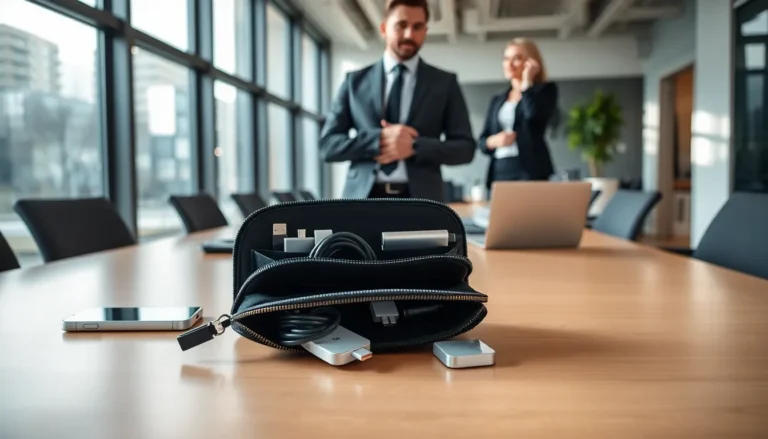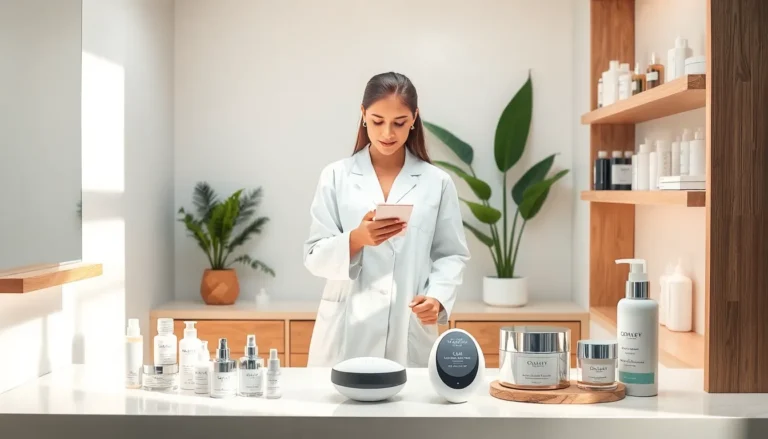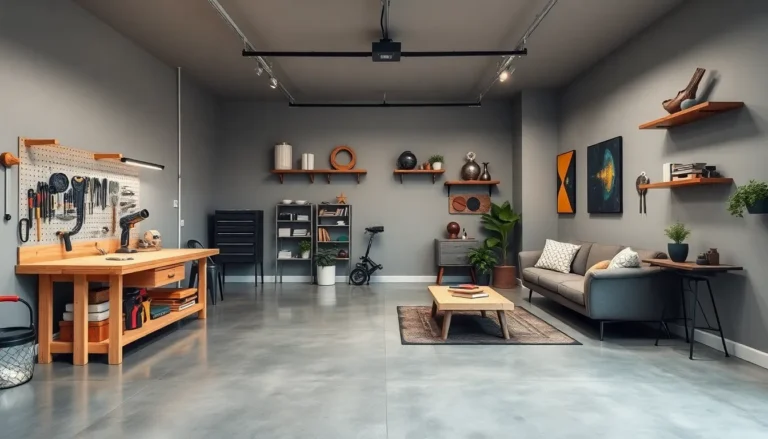In a world where precision reigns supreme, sensor calibration tests are the unsung heroes of technology. Imagine your favorite gadget suddenly deciding it’s time to measure temperature in degrees unicorn instead of Celsius. That’s where calibration swoops in like a superhero in a lab coat, ensuring sensors deliver accurate data and keep everything running smoothly.
Table of Contents
ToggleOverview of Sensor Calibration Test
Sensor calibration tests serve a critical role in ensuring devices deliver precise measurements. Various sensors operate in multiple environments, making calibration essential for maintaining accuracy. A miscalibrated sensor can lead to erroneous data, affecting overall system performance.
Calibration processes typically involve comparing a sensor’s output to a known standard. This standard often comes from reliable reference instruments, guaranteeing that the measurements remain true. During testing, technicians adjust the sensor settings to align with this standard, correcting any deviations.
Different types of sensors require specific calibration techniques. For instance, temperature sensors often use controlled environments to validate readings. Pressure sensors might require comparison against a pressure standard gauge. Such targeted approaches enhance the reliability of the calibration efforts.
Regular calibration schedules benefit organizations by preventing inaccuracies over time. Manufacturers often recommend periodic testing to ensure compliance with industry standards. Consistent calibration supports long-term sensor reliability, contributing to device longevity and minimizing errors.
Data from calibration tests allow for thorough documentation. Records of each calibration session help track sensor performance and guide future maintenance decisions. Keeping these records also aids in compliance with regulatory requirements, particularly in critical sectors like healthcare and aviation.
Achieving accurate results from sensor calibration tests ultimately enhances trust in technological systems. By prioritizing calibration, industries can significantly reduce the risk of malfunctions. Maintaining precise measurements ensures that devices operate effectively, delivering reliable performance over their lifespan.
Importance of Sensor Calibration
Sensor calibration tests hold significant value in maintaining the accuracy and reliability of various technologies. Performing regular calibrations directly impacts the effectiveness of devices across multiple applications.
Accuracy and Precision
Achieving accuracy is crucial in any measurement system. Calibration aligns a sensor’s output with a known standard, ensuring the data recorded reflects true values. Miscalibrated sensors produce erroneous readings that can lead to costly errors. For instance, in healthcare, inaccurate temperature readings can impact patient safety. Adjustments made during calibration enable sensors to perform within defined tolerances. Precision relies on this process; when sensors operate without proper calibration, the margin of error expands, compromising results.
Performance Consistency
Consistency in sensor performance contributes to overall system reliability. Regular calibration ensures that sensors operate reliably over time, minimizing variations in readings. By adhering to recommended calibration schedules, industries maintain the trustworthiness of their devices. For example, a manufacturing facility relies on accurate pressure readings to ensure safety and efficiency. Inconsistent performance can lead to malfunctions or production delays. Calibration documentation tracks sensor performance and provides essential data for compliance with industry standards. Ensuring consistent performance strengthens a company’s reputation and operational integrity.
Types of Sensor Calibration Tests
Sensor calibration tests vary based on the type of measurements involved. Two primary types include static calibration and dynamic calibration.
Static Calibration
Static calibration occurs when a sensor measures a stable input under controlled conditions. This process involves comparing the sensor output to a known reference standard, ensuring accuracy at fixed points. Technicians often use laboratory settings for this calibration type, which apply to devices like temperature sensors or pressure gauges. Adjustments are made to correct any discrepancies found during testing. Regular static calibrations help maintain accuracy over time by ensuring sensors perform reliably in a stable environment.
Dynamic Calibration
Dynamic calibration tests a sensor’s response to changing conditions over time. In this type, sensors are subjected to varying inputs, simulating real-world scenarios. This test assesses how quickly and accurately a sensor reacts to these changes, making it crucial for applications like motion detection or sound level measurements. Technicians track response times and linearity throughout this calibration, ensuring sensors perform optimally under dynamic conditions. Regular dynamic calibration helps identify potential issues and supports the reliability of fast-reacting technologies.
Steps in Conducting a Sensor Calibration Test
Understanding the steps involved in a sensor calibration test enhances accuracy in measurements. This section outlines the essential phases: preparation, execution, and verification.
Preparation
Preparation sets the foundation for effective calibration. Identify the sensor type to determine specific requirements. Gather necessary calibration equipment, such as reference standards and environmental controls. Ensure that testing conditions match the sensor’s operational environment. Understand the manufacturer’s guidelines for optimal calibration procedures. Document the initial sensor readings to establish a baseline for further comparison.
Execution
Execution refers to the actual calibration activities. Begin by exposing the sensor to standard conditions tailored for its specific type. Adjust the sensor settings in accordance with the deviations noted from the baseline measurements. Conduct multiple readings to ensure consistency and reliability. Utilize automated calibration software, when available, to enhance efficiency. Perform the calibration in controlled environments for maximum accuracy and repeatability.
Verification
Verification confirms the effectiveness of the calibration process. Compare the adjusted readings from the sensor against known standards. Analyze the data to ensure the sensors meet accuracy requirements. Document any discrepancies to substantiate compliance with industry regulations. Regularly perform verification tests to maintain ongoing sensor reliability. Establish a schedule for future calibrations based on the manufacturer’s recommendations and operational usage.
Common Tools and Techniques for Calibration
Calibration relies on various tools and techniques to ensure optimal sensor performance. Digital multimeters play a vital role in measuring voltage, current, and resistance, crucial for testing electrical sensors. For temperature sensors, thermocouples and resistance temperature detectors (RTDs) provide accurate reference points, enabling precise adjustments.
Pressure sensors often utilize pressure calibration kits, which include calibrated pressure gauges and controllers. These kits help establish known pressure standards that allow technicians to verify sensor accuracy. Oscilloscopes also serve as important tools for dynamic testing, giving insights into sensor response times and behavior under varying conditions.
Calibrating devices often take advantage of specialized software. This software can automate data logging during calibration procedures, simplifying the process of tracking changes and improvements. Signal generators produce predictable test signals, essential for evaluating the integrity of output from various sensors.
Understanding the calibration techniques adds another layer of effectiveness. Static calibration techniques ensure consistent readings by using stable environmental conditions to establish baselines. In contrast, dynamic calibration techniques test sensors in real-time conditions, highlighting how they respond to changes in the environment.
Periodic review of calibration results is essential for maintaining standards. Technicians document outcomes meticulously, which assists with compliance and quality assurance. Regular checks enable swift identification of potential deviations, maintaining the accuracy and reliability of the sensors used across industries.
Ultimately, leveraging appropriate tools and techniques ensures that sensor calibration tests meet required performance standards. By employing these methods, industries enhance operational efficiency and strengthen confidence in their measurement accuracy.
Prioritizing sensor calibration tests is essential for maintaining the accuracy and reliability of technological devices. Regular calibration not only prevents costly errors but also reinforces compliance with industry standards. By implementing a structured calibration schedule and utilizing the right tools and techniques, industries can significantly enhance the performance of their sensors.
The meticulous documentation generated during the calibration process serves as a vital resource for tracking sensor performance and ensuring operational integrity. Ultimately, a commitment to regular calibration fosters trust in technology, reduces the risk of malfunctions, and guarantees that devices operate effectively throughout their lifespan. Embracing these practices is crucial for any industry relying on precise measurements.






